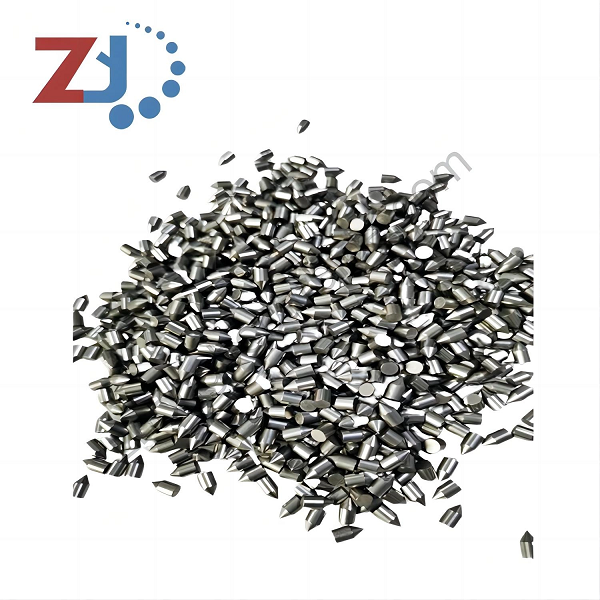Carbide tips are small pieces made from a material called carbide. Carbide is a super tough and strong material that is often used to make cutting tools. It is a special type of material that can withstand a lot of wear and tear, making it perfect for tools that need to stay sharp for a long time.
One of the reasons carbide tips are so durable is because carbide is extremely hard. This hardness helps the tips stay sharp even after cutting through tough materials like metal or wood. Carbide is also resistant to heat, which means it can handle high temperatures without losing its sharp edge. This durability makes carbide tips a popular choice for cutting tools that need to last a long time.
Why Do We Use Carbide Tips?
Carbide tips are an essential component in various tools, such as drill bits, saw blades, and cutting inserts. These tips are specifically designed to withstand high levels of heat and abrasion during cutting or drilling processes. Their durability and hardness make them ideal for applications where other materials might wear out quickly.
There are several advantages to using carbide tips over traditional tool materials. One of the main benefits is their longevity - carbide tips have a much longer lifespan than steel or other alloys, reducing the need for frequent replacements. Additionally, carbide tips maintain their sharpness for longer periods, resulting in cleaner cuts and improved precision.
Moreover, carbide tips are known for their resistance to wear and tear, making them a reliable choice for demanding cutting tasks. Their hardness helps prevent chipping and breaking, ensuring consistent performance over time.
Some Downsides of Carbide Tips
While carbide tips offer many advantages, there are also some downsides to consider. One of the main disadvantages of carbide tips is their brittleness. Carbide is a hard and rigid material, but this also makes it prone to chipping or breaking under heavy impact.
Another drawback of carbide tips is the cost. Carbide is more expensive than other materials used for tool tips, which can make tools with carbide tips pricier upfront. However, it's important to weigh this initial investment against the longer lifespan and superior performance that carbide tips offer.
Additionally, while carbide is highly durable and wear-resistant, it can be challenging to sharpen. Unlike steel or other materials that can be easily sharpened, carbide tips require specialized equipment and expertise to maintain their cutting edge effectively.
Lastly, carbide tips can be more difficult to work with than other materials. The hardness of carbide makes it less forgiving if a mistake is made during the manufacturing process, which can result in higher production costs and potential delays.
Taking Care of Your Carbide Tools
In order to maximize the lifespan of your cutting tools with carbide tips, proper maintenance is essential. By following some simple tips and tricks, you can ensure that your carbide tools remain sharp and efficient for a long time.
One of the key aspects of maintaining carbide tools is keeping them clean and dry after each use. Moisture and dirt can cause corrosion and damage to the carbide tips, reducing their effectiveness. Make sure to wipe down the tools with a clean cloth and store them in a dry place.

Another important factor in caring for carbide tools is avoiding excessive heat. While carbide is a durable material, prolonged exposure to high temperatures can weaken the tips. If you are using your tools for extended periods, take breaks to allow them to cool down.
Regular sharpening is also crucial for maintaining the sharpness of carbide tips. Invest in a good quality sharpening stone or diamond file specifically designed for carbide tools. By keeping the tips sharp, you can ensure precise and efficient cutting performance.
Additionally, it is important to handle carbide tools with care. Avoid dropping them or subjecting them to heavy impact, as this can cause the tips to chip or break. Always use the tools in a controlled and steady manner to prevent unnecessary wear and tear.
FAQs About Carbide Tips
1.What Are Carbide Tips Made Of?
Carbide tips are made from a material called carbide, which is a compound of carbon and another element, typically tungsten. This combination creates a very hard and durable substance that is ideal for cutting tools.
2.Why Are Carbide Tips Better for Cutting?
Carbide tips are preferred for cutting tasks because of their exceptional hardness and wear resistance. This means they can withstand high-speed cutting and abrasive materials without losing their sharpness, making them very efficient and long-lasting.
3.Can Carbide Tips Break?
While carbide tips are extremely durable, they are not indestructible. Like any tool, they can break under certain conditions, such as excessive force or improper use. However, with proper care and maintenance, carbide tips can last a long time without breaking.
4.How Do You Know When to Replace a Carbide Tip?
You may need to replace a carbide tip when it becomes dull and no longer cuts efficiently. Signs of wear include chipping, dullness, or decreased cutting performance. Regular inspection and maintenance can help you identify when it's time to replace a carbide tip.























